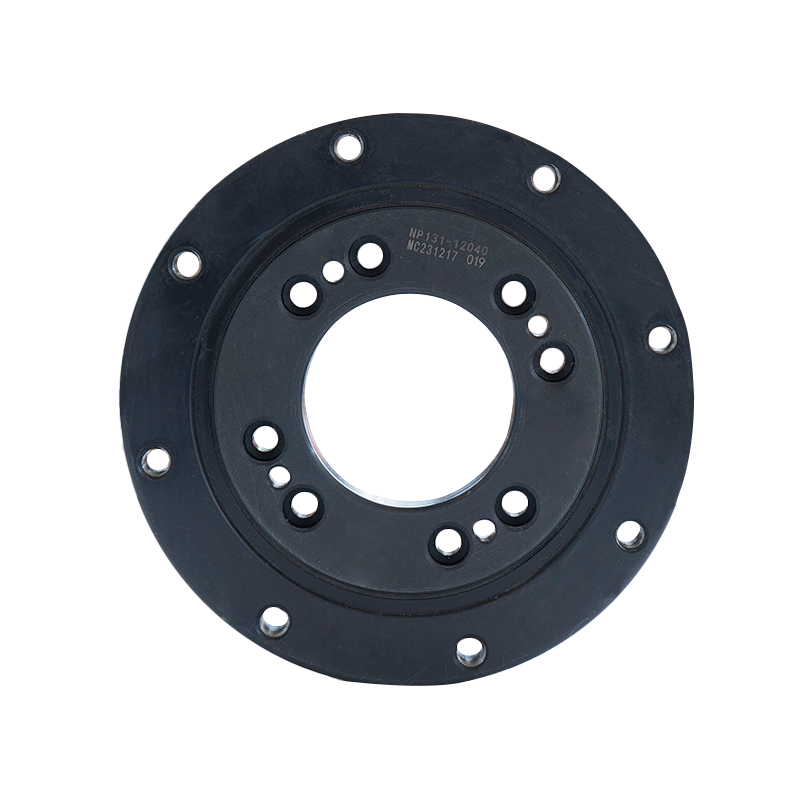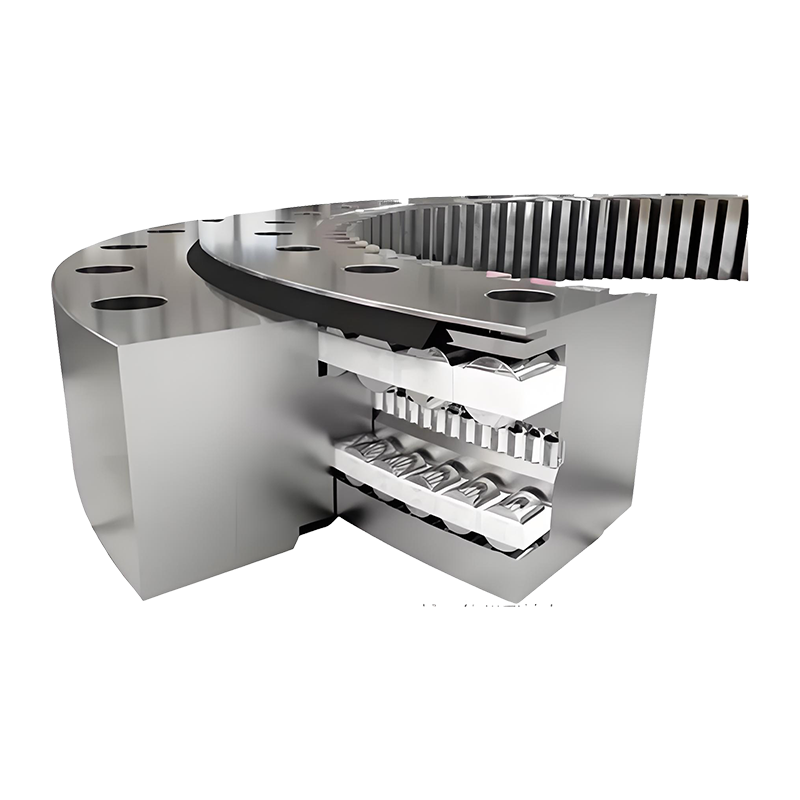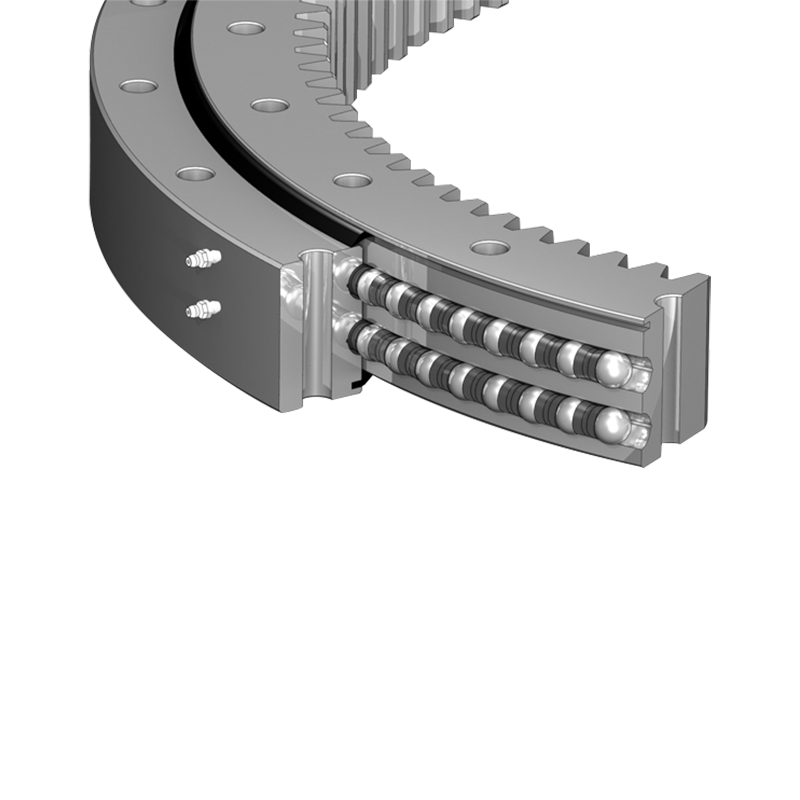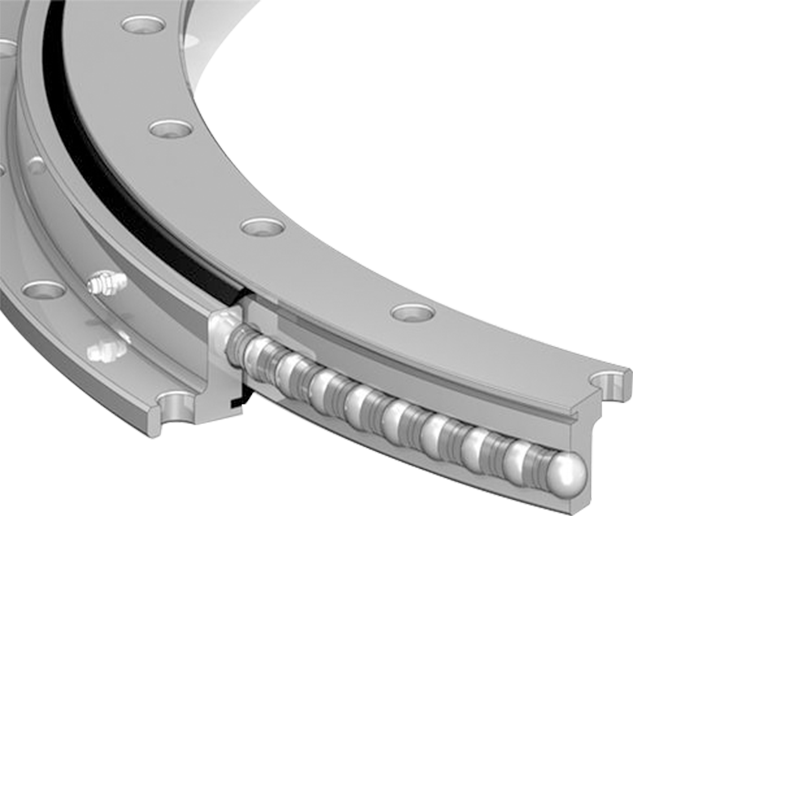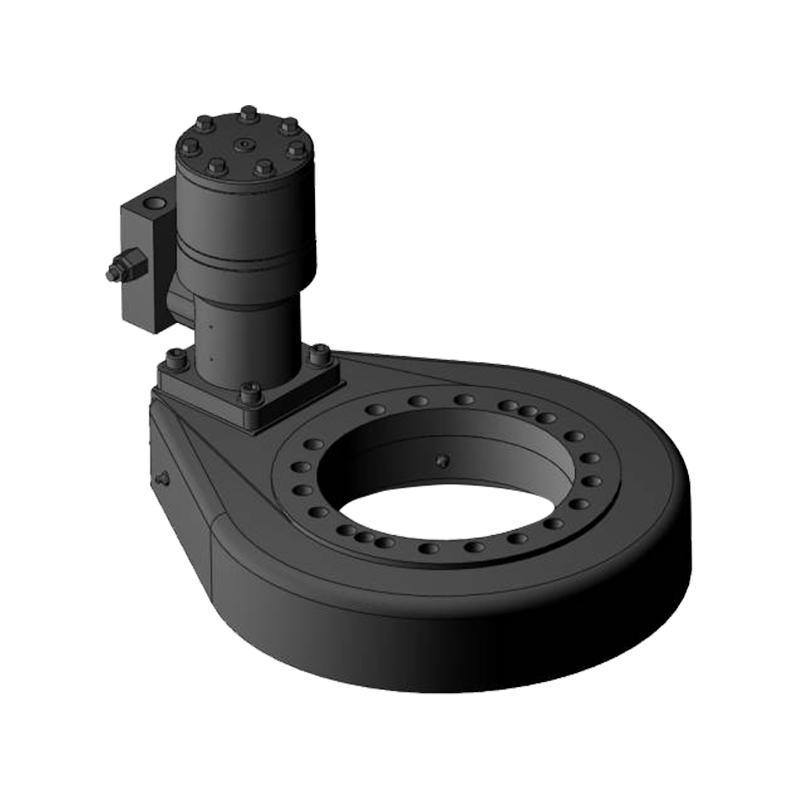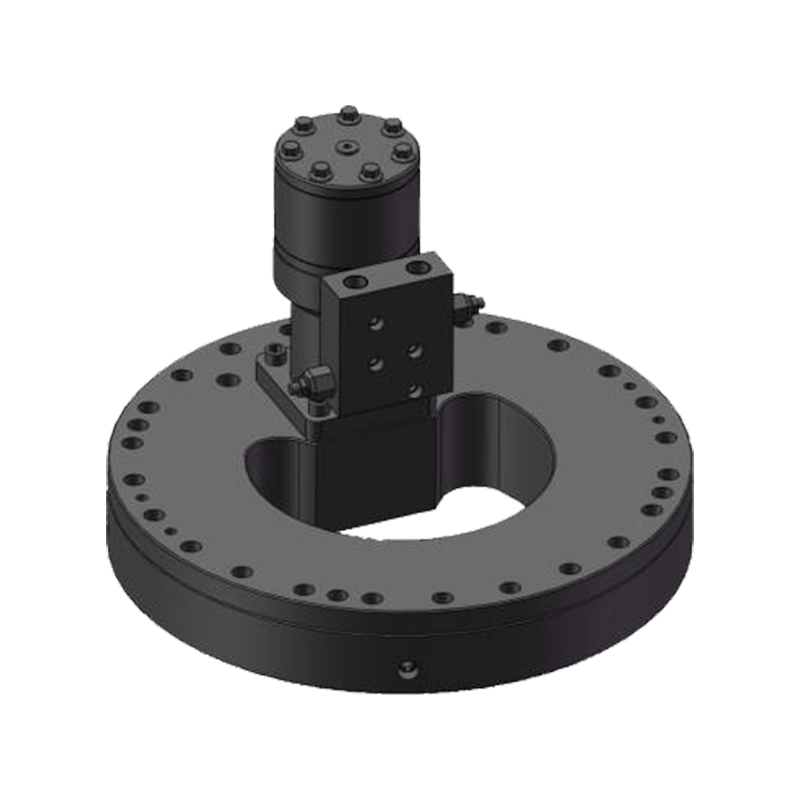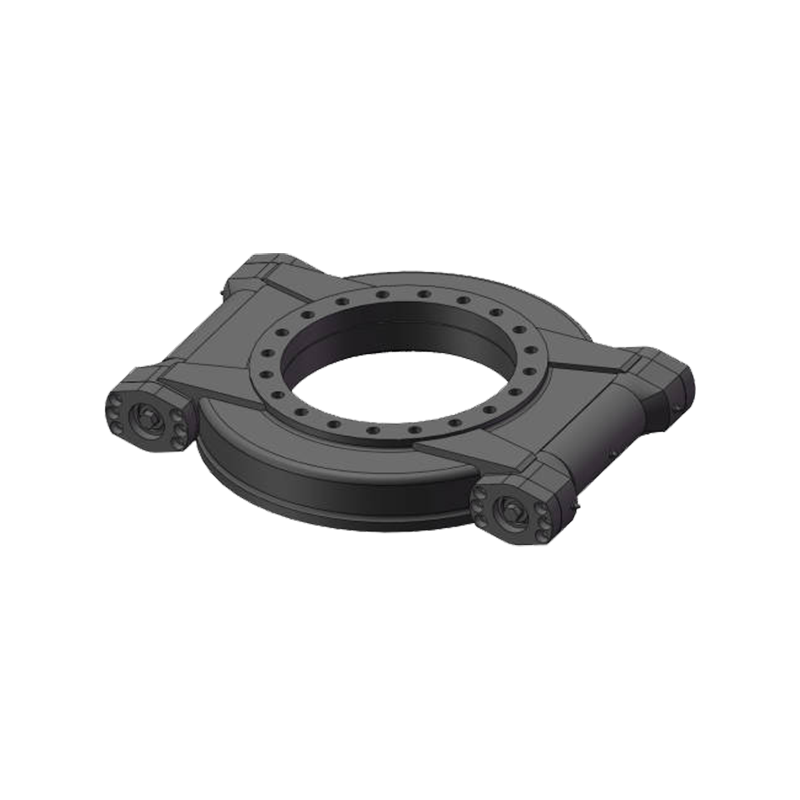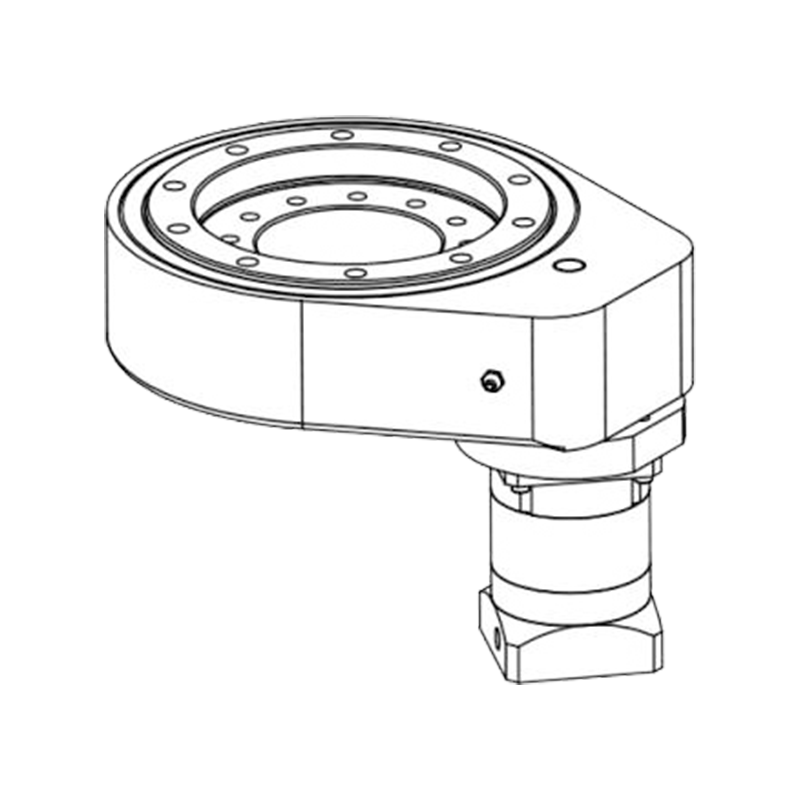How do single-row ball slewing bearings handle shock loads?
 2025.04.24
2025.04.24
 Industry news
Industry news
Single-row ball slewing bearings are designed to handle a combination of axial, radial, and tilting moment loads, but their ability to handle shock loads (sudden, high-magnitude forces) is influenced by several factors. Shock loads can arise from impacts, rapid load changes, or dynamic conditions, and handling them effectively requires specific design considerations.
1. Material Selection and Heat Treatment
High-Strength Materials: Single-row ball slewing bearings are typically made from high-strength steel, such as 50Mn or 42CrMo, which has been specially heat-treated to enhance its toughness and resistance to impact. These materials are chosen to absorb and dissipate energy from shock loads without cracking or deforming.
Case-Hardening: Many slewing bearings undergo case-hardening, which creates a hard outer surface for wear resistance, while maintaining toughness in the core. This ensures that the bearing can absorb sudden impacts without suffering significant damage.
2. Ball and Raceway Geometry
Curved Raceways: The design of the raceways (the grooves in which the balls move) in single-row ball slewing bearings is crucial in managing shock loads. The raceways are typically slightly curved, which helps to distribute the load more evenly across the balls during sudden impacts. This reduces the chances of localized stress concentrations that could lead to bearing failure.
Large Contact Area: In a single-row ball slewing bearing, the balls are in contact with the raceways at multiple points. This large contact area helps distribute shock loads over a broader surface, reducing the risk of damage to the bearing surfaces.
3. Preloading and Internal Clearance
Preload: A slight preload can be applied to the bearing to eliminate any internal clearance. This ensures that the balls are always in contact with the raceways, which helps reduce the occurrence of shock-induced gaps that might allow for slippage or uneven loading.
Clearance Control: By controlling the internal clearance, manufacturers can balance the bearing's ability to handle static loads and dynamic shock loads. In some cases, a slight amount of internal clearance may be necessary to allow the bearing to absorb some shock without inducing excessive friction or wear.
4. Specialized Seals and Lubrication
Seals: High-quality seals are crucial in protecting the bearing from contaminants (such as dirt, water, or dust) that could worsen the effects of shock loads. The seals help ensure the longevity and smooth operation of the bearing, even under harsh conditions.
Lubrication: Proper lubrication is essential for managing shock loads, as it reduces friction between the balls and raceways. Lubricants also cushion the shock forces, dissipating some of the impact energy and preventing premature wear.
5. Ball Size and Material
Ball Size: The diameter of the balls in a single-row ball slewing bearing is designed to ensure an optimal balance between load distribution and shock load handling. Larger balls can absorb more shock but may increase friction, while smaller balls reduce friction but may be less efficient at absorbing sudden impacts.
Ball Material: The balls are typically made from high-grade materials like chrome steel or ceramic, which offer superior strength and shock resistance. Ceramic balls, in particular, are known for their high hardness and low friction properties, making them ideal for handling dynamic loads.
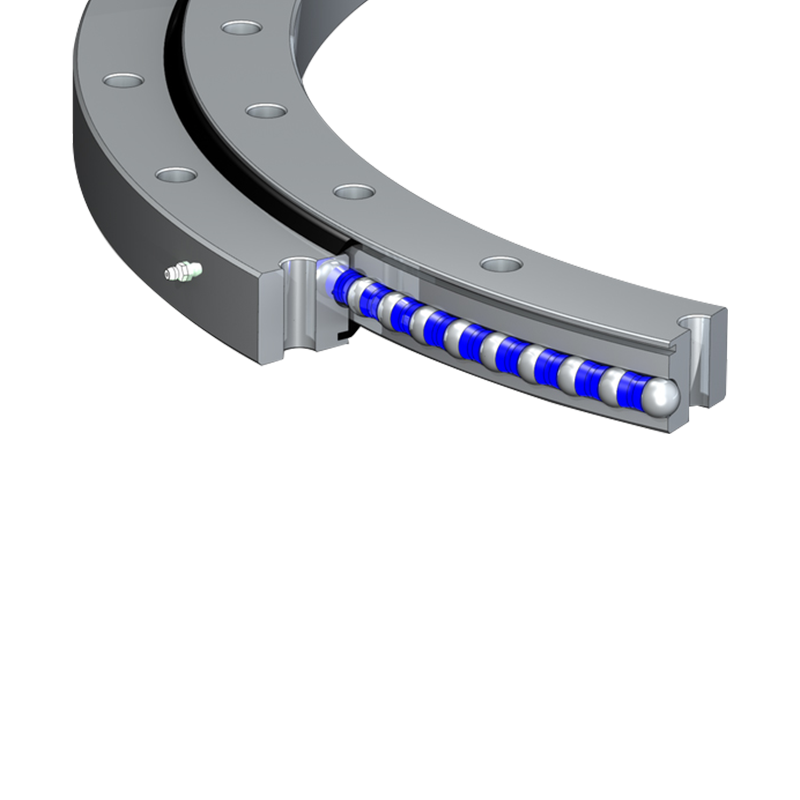
6. Design of the Outer and Inner Rings
Stiff Outer and Inner Rings: The rings of the bearing are designed to be stiff, preventing them from bending under shock loads. This ensures that the balls remain properly aligned with the raceways, maintaining the integrity of the bearing even during sudden load changes.
Optimized Raceway Surface: The surfaces of the raceways are often treated to enhance their hardness and smoothness, reducing the likelihood of surface damage or wear when subjected to shock loads. This allows the bearing to maintain its performance even under challenging conditions.
7. Load Distribution via Tilting Moment Capacity
Tilting Moment Handling: Single-row ball slewing bearings are designed to handle tilting moments (bending or twisting forces) as well as axial and radial loads. The geometry of the balls and raceways helps distribute tilting moment loads more evenly across the bearing, which is particularly important when the bearing experiences sudden shock forces that could lead to misalignment or deformation.
8. Shock Load Absorption Features
Damping Features: Some advanced designs of slewing bearings are equipped with specific damping features, such as internal shock-absorbing mechanisms or rubber inserts, which help mitigate the effects of high-impact forces.
Buffering Elements: Some slewing bearings also use buffering elements between the balls and raceways to reduce the intensity of shocks, especially in applications like
cranes, excavators, or heavy machinery where such loads are common.
9. Application-Specific Modifications
Customized Bearings: In some cases, manufacturers may design customized single-row ball slewing bearings with enhanced shock load resistance. These bearings may feature stronger materials, larger balls, and optimized raceway geometry, specifically tailored for high-impact applications like marine equipment, lifting cranes, or mining machinery.



